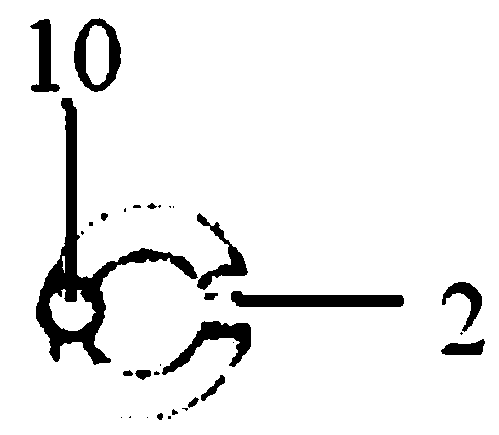Minimally invasive tooth extraction device
An integrated, knife-bar technology, applied in the field of tooth extraction devices and minimally invasive tooth extraction devices, can solve the problems of increasing the cost of dental instruments, reducing the work efficiency of dentists, increasing the cost of manpower and disinfection and sterilization, and reducing manpower and sterilization costs , The design method is simple, and the effect of the design is reasonable
- Summary
- Abstract
- Description
- Claims
- Application Information
AI Technical Summary
Problems solved by technology
Method used
Image
Examples
Embodiment Construction
[0018] The following will clearly and completely describe the technical solutions in the embodiments of the present invention with reference to the accompanying drawings in the embodiments of the present invention. Obviously, the described embodiments are only some, not all, embodiments of the present invention. Based on the embodiments of the present invention, all other embodiments obtained by persons of ordinary skill in the art without making creative efforts belong to the protection scope of the present invention.
[0019] see Figure 1-5 , a minimally invasive tooth extraction device, comprising a tooth extraction device consisting of a handle 9, a cutter bar 1 and a blade;
[0020] Described cutter bar 1 is integral with blade, is movably connected on the handle 9, and described cutter bar 1 is made of cutter bar card 12, cutter bar groove 13 and cutter bar tail end 14, and described handle 9 comprises handle inner bar 8, A steel ball 10 and a spring 4, the steel ball ...
PUM
 Login to View More
Login to View More Abstract
Description
Claims
Application Information
 Login to View More
Login to View More - R&D
- Intellectual Property
- Life Sciences
- Materials
- Tech Scout
- Unparalleled Data Quality
- Higher Quality Content
- 60% Fewer Hallucinations
Browse by: Latest US Patents, China's latest patents, Technical Efficacy Thesaurus, Application Domain, Technology Topic, Popular Technical Reports.
© 2025 PatSnap. All rights reserved.Legal|Privacy policy|Modern Slavery Act Transparency Statement|Sitemap|About US| Contact US: help@patsnap.com



